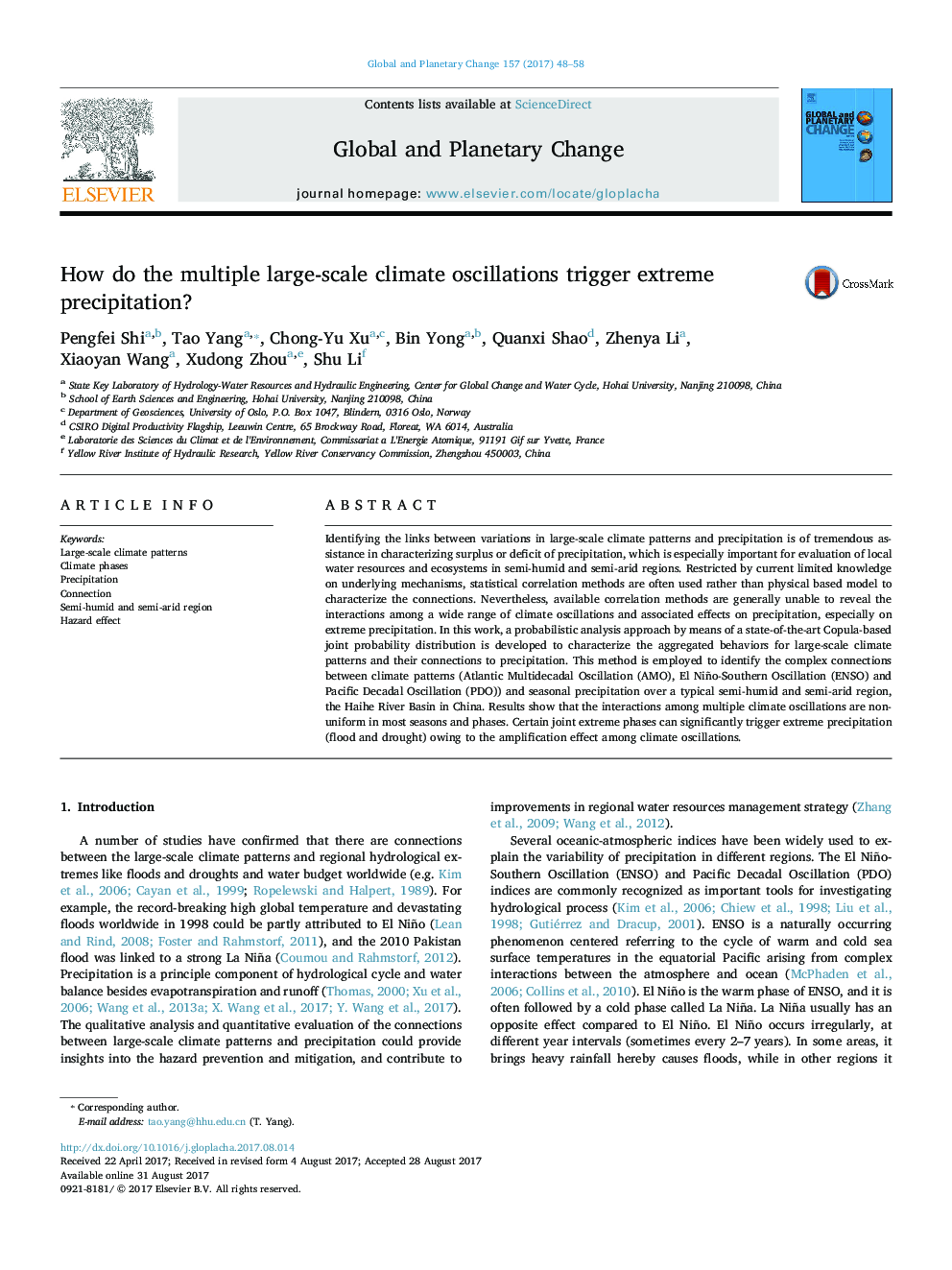| Article ID | Journal | Published Year | Pages | File Type |
|---|---|---|---|---|
| 5755311 | Global and Planetary Change | 2017 | 11 Pages |
Abstract
Identifying the links between variations in large-scale climate patterns and precipitation is of tremendous assistance in characterizing surplus or deficit of precipitation, which is especially important for evaluation of local water resources and ecosystems in semi-humid and semi-arid regions. Restricted by current limited knowledge on underlying mechanisms, statistical correlation methods are often used rather than physical based model to characterize the connections. Nevertheless, available correlation methods are generally unable to reveal the interactions among a wide range of climate oscillations and associated effects on precipitation, especially on extreme precipitation. In this work, a probabilistic analysis approach by means of a state-of-the-art Copula-based joint probability distribution is developed to characterize the aggregated behaviors for large-scale climate patterns and their connections to precipitation. This method is employed to identify the complex connections between climate patterns (Atlantic Multidecadal Oscillation (AMO), El Niño-Southern Oscillation (ENSO) and Pacific Decadal Oscillation (PDO)) and seasonal precipitation over a typical semi-humid and semi-arid region, the Haihe River Basin in China. Results show that the interactions among multiple climate oscillations are non-uniform in most seasons and phases. Certain joint extreme phases can significantly trigger extreme precipitation (flood and drought) owing to the amplification effect among climate oscillations.
Keywords
Related Topics
Physical Sciences and Engineering
Earth and Planetary Sciences
Earth-Surface Processes
Authors
Pengfei Shi, Tao Yang, Chong-Yu Xu, Bin Yong, Quanxi Shao, Zhenya Li, Xiaoyan Wang, Xudong Zhou, Shu Li,
